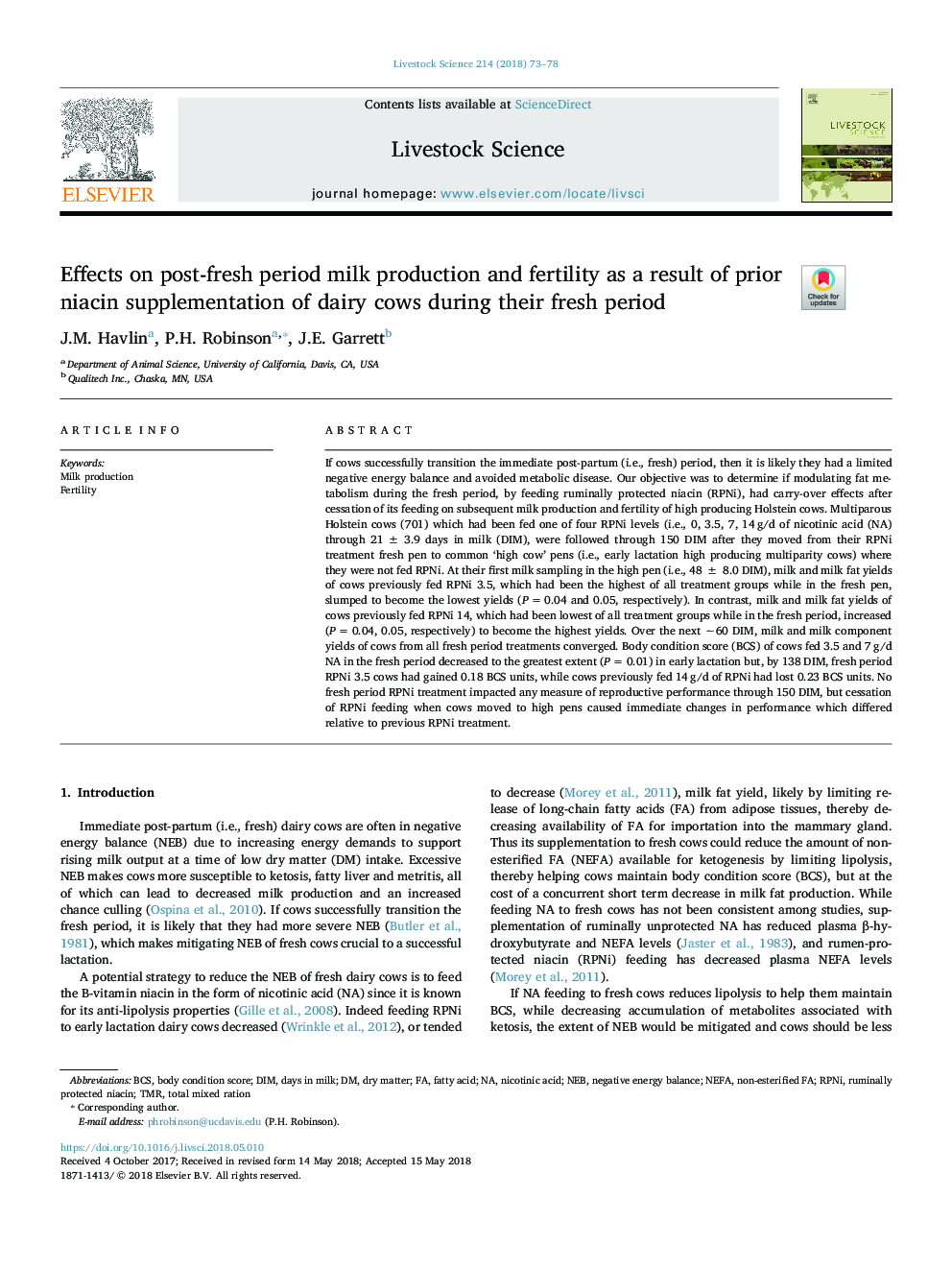| کد مقاله | کد نشریه | سال انتشار | مقاله انگلیسی | نسخه تمام متن |
|---|---|---|---|---|
| 8501886 | 1553918 | 2018 | 6 صفحه PDF | دانلود رایگان |
عنوان انگلیسی مقاله ISI
Effects on post-fresh period milk production and fertility as a result of prior niacin supplementation of dairy cows during their fresh period
ترجمه فارسی عنوان
اثرات شیر تولید و باروری بعد از شیر تازه به عنوان یک نتیجه از مکمل پیشگیری از نیاسین گاوهای شیری در دوره تازه آنها
دانلود مقاله + سفارش ترجمه
دانلود مقاله ISI انگلیسی
رایگان برای ایرانیان
کلمات کلیدی
موضوعات مرتبط
علوم زیستی و بیوفناوری
علوم کشاورزی و بیولوژیک
علوم دامی و جانورشناسی
چکیده انگلیسی
If cows successfully transition the immediate post-partum (i.e., fresh) period, then it is likely they had a limited negative energy balance and avoided metabolic disease. Our objective was to determine if modulating fat metabolism during the fresh period, by feeding ruminally protected niacin (RPNi), had carry-over effects after cessation of its feeding on subsequent milk production and fertility of high producing Holstein cows. Multiparous Holstein cows (701) which had been fed one of four RPNi levels (i.e., 0, 3.5, 7, 14â¯g/d of nicotinic acid (NA) through 21â¯Â±â¯3.9 days in milk (DIM), were followed through 150 DIM after they moved from their RPNi treatment fresh pen to common 'high cow' pens (i.e., early lactation high producing multiparity cows) where they were not fed RPNi. At their first milk sampling in the high pen (i.e., 48â¯Â±â¯8.0 DIM), milk and milk fat yields of cows previously fed RPNi 3.5, which had been the highest of all treatment groups while in the fresh pen, slumped to become the lowest yields (Pâ¯=â¯0.04 and 0.05, respectively). In contrast, milk and milk fat yields of cows previously fed RPNi 14, which had been lowest of all treatment groups while in the fresh period, increased (Pâ¯=â¯0.04, 0.05, respectively) to become the highest yields. Over the next â¼60 DIM, milk and milk component yields of cows from all fresh period treatments converged. Body condition score (BCS) of cows fed 3.5 and 7â¯g/d NA in the fresh period decreased to the greatest extent (Pâ¯=â¯0.01) in early lactation but, by 138 DIM, fresh period RPNi 3.5 cows had gained 0.18 BCS units, while cows previously fed 14â¯g/d of RPNi had lost 0.23 BCS units. No fresh period RPNi treatment impacted any measure of reproductive performance through 150 DIM, but cessation of RPNi feeding when cows moved to high pens caused immediate changes in performance which differed relative to previous RPNi treatment.
ناشر
Database: Elsevier - ScienceDirect (ساینس دایرکت)
Journal: Livestock Science - Volume 214, August 2018, Pages 73-78
Journal: Livestock Science - Volume 214, August 2018, Pages 73-78
نویسندگان
J.M. Havlin, P.H. Robinson, J.E. Garrett,
